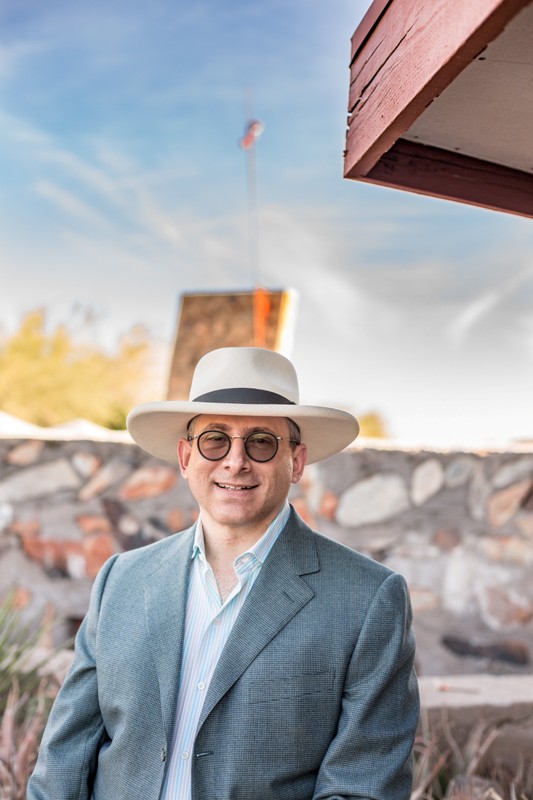
Stuart Graff
President and CEO of the Frank Lloyd Wright Foundation, who just helped land Taliesin West on the UNESCO World Heritage List
You became familiar with Frank Lloyd Wright at a young age. What most intrigued you about him/his work? There were two things that intrigued me. First was the work itself—it was just so different from any architecture that I had seen growing up in the northwest side of Chicago. I wanted to understand what these buildings were about and why they looked the way they did. And that curiosity took me to Wright’s life story—a farm kid, largely self-trained, who would go on to revolutionize the world. For a kid from a pretty humble background, that taught me that the only limits to my success were my willingness to learn and to work hard. Great stuff for an 8-year-old.
What does the UNESCO World Heritage List designation mean for modern U.S. architecture and Arizona, specifically? The experts who evaluated Wright’s work for this nomination have now validated something that the Foundation always understood—that Wright was pivotal in the development of modernism throughout the world. And this is important to our country because he was one of our first great cultural exports, at a time many Americans thought great work only came from Europe. Wright took ideas steeped in American values to Europe and started a design revolution. All of Wright’s work is inspired by the American landscape, but Wright singled-out the Arizona desert and its raw geometry as a source for the most creative and prolific part of his career.
How is Wright’s legacy being kept alive for future generations? Preservation of Taliesin West, and its older sister, Taliesin Wisconsin, is the core of our work—but we don’t just preserve buildings and landscapes. These places were all about advancing ideas of how we can live with a connection to the world around us and with each other. So our programs are evolving from traditional historic site tours into active engagement of our community, both on the campuses and through digital media, to spread these ideas, develop new thinking around connection as a sustaining force, and other work rooted in Wright’s ideas but looking forward, not backward. That’s why he created the Foundation—not to glorify his past, but to create a better future.
What is the most rewarding part of your career? What about the biggest challenge? Every day, my job is to use something I love—a legacy rooted in American values like liberty and democracy—to inspire others to find a connection with those values, and live as part of the world around them, and not merely in the world. To find beauty in the landscape, and to design every aspect of their lives around beauty in all its forms. And that’s a big mission—so the challenge is finding the means to support it.
What do you hope for the future of arts and architecture within the Valley? The Valley is challenged to sustain itself in the face of a changing climate, scarce resources and growing population. Those solutions require us to design our world to be more sustainable, to be connected to the environment and not just taking from it, but giving back. The architecture of our buildings and cities should be focused on creating an eco-system in which we play a nurturing role, rather than a destructive role. We can use the arts to help develop empathy to accept each other’s differences, too. So I hope we can building better and more resilient arts and culture institutions to help us shape a better community.
What influence do you hope to have on the Valley? We are the fifth largest metro area in the United States, but we fall far behind much smaller cities when it comes to establishing great institutions—whether we are talking about schools, hospitals, museums and other institutions that shape the quality of life in the Valley. I’d like to help us build the kind of institutions that generations of Arizonans will benefit from and be proud of. It’s happening all around us, and it’s exciting to be a part of the change.
